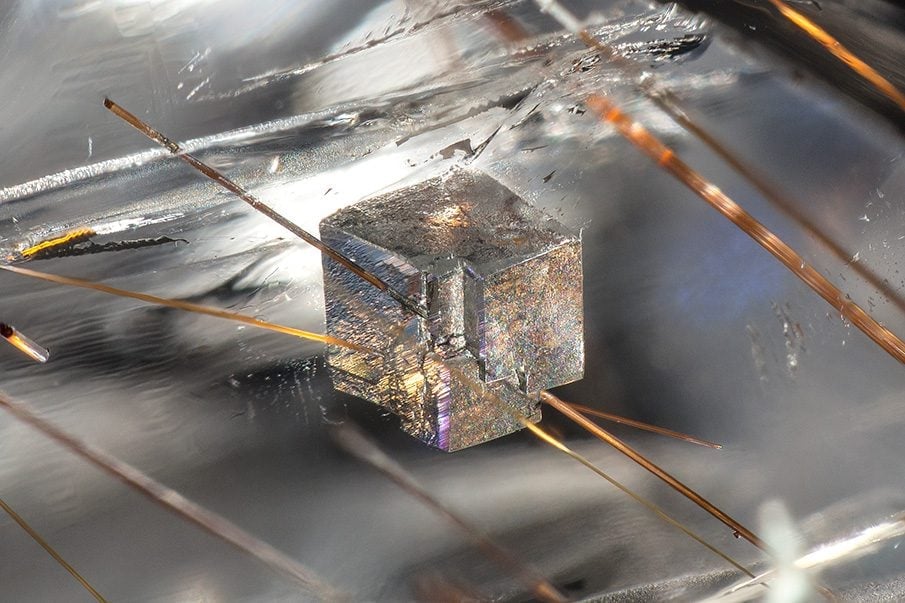An Introduction to Gemstone Inclusions
Gemstone inclusions are materials trapped inside gems as they form. Learn how gemologists use inclusions to help identify gemstones and their sources.
2 Minute Read
Gemstone inclusions can also reveal how a gem was formed and whether it's a natural or synthetic stone. Some gems have specific inclusions that their lookalikes lack. Some inclusions only occur in a single gemstone species or even in a single mine!
What are Gemstone Inclusions?
Simply put, an inclusion is any material that is trapped inside of another mineral while that mineral forms. For example, crystals, liquid or gas bubbles, or even fractures caused by radioactive material in the host material may comprise gemstone inclusions. Since researchers constantly discover new inclusions and varieties, a listing of inclusions can never be complete.
Viewing Gemstone Inclusions
Inclusions are instrumental in identifying many gemstone species. Nevertheless, viewing inclusions can be difficult. To study them, gemologists often use a microscope, preferably one with darkfield illumination. While a magnification of 30-60X (the range of most stereoscopic microscopes) may resolve many inclusions, some of the tinier ones require magnification of 200X or more.
Knowing how to use your microscope and various lighting techniques are essential skills for identifying inclusions. However, getting tiny details into sharp focus often proves quite challenging, if not impossible, in some cases. Sometimes, student gemologists can easily jump to conclusions about what they see through magnification.
Learning How to Distinguish Gemstone Inclusions
Discretion is essential. For example, can you make out the inclusion in the garnet pictured to the right? It's difficult to tell if the ends are terminated or if they're bubbles. As it turns out, they're terminated, which means the inclusion is a crystal. Crystal inclusions indicate a natural garnet, while bubbles would indicate a cheap synthetic. Thus, identifying this inclusion correctly would be critical. a
If you can't see an inclusion clearly enough to distinguish its features, don't base an identification on it. If you're in doubt, look at all the available clues. A standard gemstone identification procedure should yield enough information to make a proper identification.
Learning to locate inclusions and distinguish their varieties takes practice, because pictures and descriptions serve only as guides. Gemology students should examine as many gemstones as possible, with a loupe first and then a microscope. Keep practicing until you're an expert at finding and identifying inclusions.
More Resources
Do you want to learn more about inclusions? The International Gem Society (IGS) has a four-part series of Members Only premium articles on gemstone inclusions that document the primary varieties commonly used for gemstone identification.
- Natural Gems and Their Inclusions
- Inclusions Found in Synthetic Gems
- Inclusions Found in Enhanced Gems
- Identifying Inclusions of Specific Gems
Joel E. Arem, Ph.D., FGA
Dr. Joel E. Arem has more than 60 years of experience in the world of gems and minerals. After obtaining his Ph.D. in Mineralogy from Harvard University, he has published numerous books that are still among the most widely used references and guidebooks on crystals, gems and minerals in the world.
Co-founder and President of numerous organizations, Dr. Arem has enjoyed a lifelong career in mineralogy and gemology. He has been a Smithsonian scientist and Curator, a consultant to many well-known companies and institutions, and a prolific author and speaker. Although his main activities have been as a gem cutter and dealer, his focus has always been education. joelarem.com
Donald Clark, CSM IMG
Donald Clark, CSM founded the International Gem Society in 1998. Donald started in the gem and jewelry industry in 1976. He received his formal gemology training from the Gemological Institute of America (GIA) and the American Society of Gemcutters (ASG). The letters “CSM” after his name stood for Certified Supreme Master Gemcutter, a designation of Wykoff’s ASG which has often been referred to as the doctorate of gem cutting. The American Society of Gemcutters only had 54 people reach this level. Along with dozens of articles for leading trade magazines, Donald authored the book “Modern Faceting, the Easy Way.”
Related Articles
Precision Faceting a Story Gemstone: Custom Faceting Advice
How Do Zircons Form?
How Does Jade Form?
An Introduction to the Lapidary Arts
Latest Articles
Opal Buying Guide
Amethyst Sources Around the World: The Geological Story Behind These Purple Gemstones
Brazilianite Value, Price, and Jewelry Information
Ruby-Glass Composites vs Leaded Glass Clarity Enhancements
Never Stop Learning
When you join the IGS community, you get trusted diamond & gemstone information when you need it.
Get Gemology Insights
Get started with the International Gem Society’s free guide to gemstone identification. Join our weekly newsletter & get a free copy of the Gem ID Checklist!
